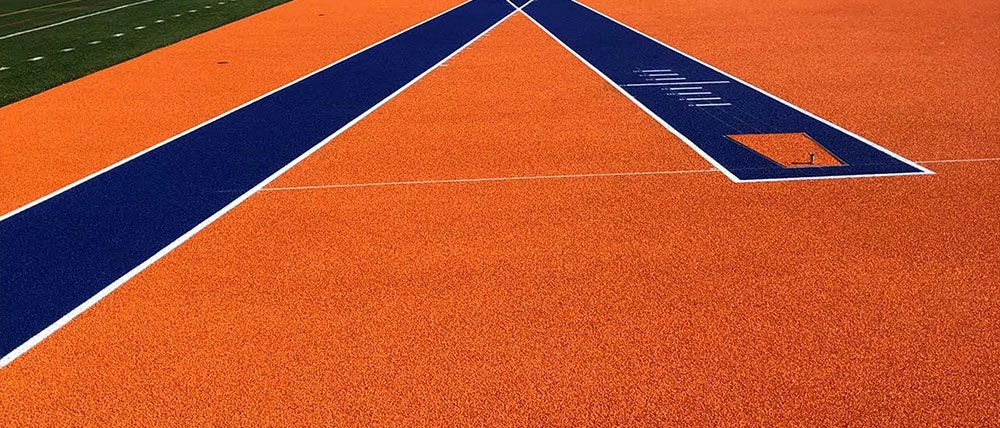Fall is Ideal for Running Track Installation & Here’s Why
Read More

A running track built today can last for nearly 30 years when maintenance is prioritized. Because these surfaces seem to last a lifetime, noticing signs of decline might be difficult. In fact, facility maintenance crews might overlook some of the more subtle signs that indicate replacement is in the near future. Here are the main signs that tell you if a running track requires replacement. We offer great running track repair or replacement.
Synthetic tracks are certainly tough, but they can break down over time. If you start seeing granules across the surface, it’s time to investigate further. Cleats, vehicles and other heavy-duty objects can put excessive stress on the track. It may look intact at the moment, but those granules are coming from the track. Look around the surface, including the edges, to find where they originate from.
One of the most obvious signs of a declining track is cracks. They can arise at any point across the surface. Cracks along the edges reflect a structural issue, whereas fissures on the main surface may be stress related.
It’s important to verify if the track is being misused or declining from natural age. Professional inspections can help you determine the main causes and form an action plan.
When your running track was first installed, it was carefully leveled and constructed for optimal drainage. A declining track might show signs of poor drainage now. The base might be breaking apart, which compromises its drainage ability.
It’s nearly impossible to repair a base that’s breaking apart. Although there may be an isolated section of concern right now, it’s usually the beginning of widespread damage.
All tracks have a basic structure, including an aggregate sub-base, asphalt base and surface. These layers become one when the track is professionally installed. Over time, however, detachment might occur between two or more layers.
In most cases, the track cannot be repaired if the detachment covers a large area. This fact indicates a serious problem from the ground up. Starting out with a new track is the best course of action.
Delamination is the process of the track’s top layer separating from a lower portion. It may be a subtle separation, such as a slight bubble to the track’s surface. An isolated delamination can be repaired, but widespread separation should be taken more seriously. A track probably requires replacement if the separation occurs across more than half of the surface.
Requesting an annual inspection is a cost-effective way of keeping up with track maintenance. Facility managers can learn about their track and pending repairs that might be on the horizon. Keep up with a proactive approach to track care so that replacement projects don’t arise prematurely. We offer more options for gym flooring in Pennsylvania.